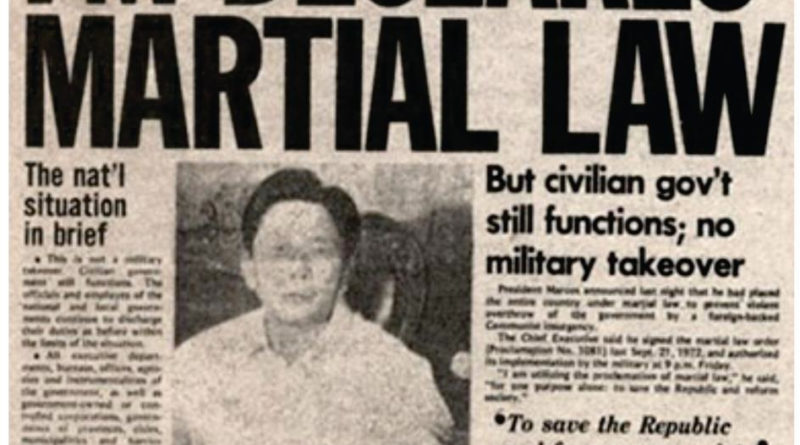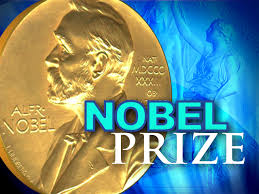Op-Ed : Have we learned nothing from the past 45 years? | Column – The Manila Times
Those who cannot remember the past are condemned to repeat it.
—George Santayana
.
I COULD not ascertain with sufficient accuracy the demographic profile of those who marched yesterday to denounce the proclamation of martial law and the suspension of the privilege of the writ of habeas corpus throughout the country on September 21, 1972. That was 45 years ago. But unless the average protest-marcher was at least 60, it means they were not yet around when President Ferdinand Marcos signed Proclamation 1081 which, for the longest one-hour in my past Cabinet career, I had to read to the nation on television as the President’s spokesman and information secretary. They had no firsthand knowledge or experience of any of the eight years of Martial Law.
But whether or not they had anything to do with the Communist Party of the Philippines/New People’s Army/National Democratic Front or any of the front organizations that reportedly spearheaded the protest rallies, they ought to have known that Martial Law was a constitutional response to the communist threat to take over the entire country. This was one of the most essential facts about Martial Law, but one which has been constantly airbrushed in any discussion of the subject, especially by the Left and their support groups whose armed violence had made Proclamation 1081 an absolute necessity for Marcos.
The effect or the cause?
Until now, the communist Left and their support groups would like to have us believe that Martial Law was the cause of their continuing insurgency. It was clearly not, and could never have been so, in the natural order of things; Martial Law was clearly the state response to the insurgency. What we had in 1972 was a rampaging communist armed rebellion that called for, among other things, the assassination of Marcos and the coronation not even of Joema Sison, but of Bernabe Buscayno, aka (NPA) “Kumander Dante.” (“Patayin si Marcos,” “Mabuhay si Dante!” screamed the red banners that flew on J. P. Laurel Street, outside the gates of Malacañang.
Certainly, Martial Law had its abuses and excesses. And they have been inflated beyond belief. But if Marcos did not proclaim Martial Law when he did, the CPP/NPA/NDF might not have taken long to take over, by force of arms and subversive propaganda, even without any help from a sympathetic politician like the late former Sen. Benigno “Ninoy” Aquino Jr. or the incumbent President Rodrigo Duterte.
That it took eight long years to run its course instead of a mere 60 days, as now mandated by the present Constitution, remains a live question for contention and debate. I was hoping for a shorter period, and I used to think that Marcos could have or should have lifted Proclamation 1081 and restored national elections after three years, in 1975 or thereabouts. At the time, Marcos appeared to be at the height of his popularity, and such was the rapport between the government and the masses that as information secretary I would get unusual calls from unknown parties, asking me to intervene in fixing petty family quarrels between spouses and siblings because they happened to believe they could trust me.
But I have had to rethink that position since l left the Cabinet six years before the 1986 EDSA revolt, which ousted Marcos.
Prematurely lifted?
The CPP/NPA/NDF managed to remain a national security threat long after the Cold War had ended and the Soviet Union had been dismantled, long after the People’s Republic of China had been transformed into a market-oriented economic colossus, and long after every major communist party in Europe had abandoned armed struggle in favor of parliamentary politics. Why was this?
Could it mean, on the global plane, that the USSR committed a grievous error when it decided to disband? Or could it mean on the national level that Marcos committed an unpardonable error when he lifted Martial Law without sufficient guarantee that the virulent communist threat had been fully neutralized?
Upon closer inspection, it becomes clear to me that the error came after Marcos.
Having done what he had done to turn back the communist rebellion, including convincing China to cut off its funding, arming and training of Filipino communists, Marcos had every reason to believe he had neutralized the communist threat, and also the Moro insurgency, by jailing the top CPP/NPA/NDF leaders and driving the rest of their followers underground, while sending Moro National Liberation Front chairman Nur Misuari into forced self-exile in Damascus.
But after Marcos was ousted on February 25, 1986 by his own military, with the support of the civilian population, the Church hierarchy and the United States, Cory Aquino, whom the military had installed as revolutionary president despite her having lost in the February 7, 1986 “snap” presidential election, freed the top communist leaders from jail, enabling them to seek political sanctuary in Utrecht, the Netherlands, from where they would direct the armed struggle in the Philippines. She also had Misuari brought back to Jolo where she paid him tribute, like he was an Oriental potentate or a fellow head of state.
Nullifying Marcos
These acts reversed and nullified the most important national security gains achieved by Marcos. They were not in pursuance of any known or clear national security objective; they simply inputed the emotional biases of the widow of the late “Ninoy” Aquino, who had become the principal beneficiary of the EDSA revolt without having taken an active part in it. Marcos was pilloried for calling her a “mere housewife,” but she failed to rise above that category, and her treatment of the communist problem exquisitely manifested it. Ninoy had long positioned himself to become a future Philippine President, and had consistently followed an agenda to fulfill it. And not infrequently, at Marcos’ expense.
Two examples will suffice.
In 1969, Ninoy brokered a historic meeting between CPP founding chairman Joma Sison and NPA leader “Kumander Dante” in Hacienda Luisita. his wife’s family’s sprawling sugar estate in Tarlac. This gave birth to the CPP/NPA partnership, which has since evolved into the CPP/NPA/NDF.
In 1971, August 21, Ninoy managed to be the most important and only party official to go missing at the Liberal Party’s most important political rally at Plaza Miranda in Manila when several grenades were lobbed onto the stage, killing nine and injuring 95, including most of the LP senatorial candidates onstage. Ninoy instantly accused Marcos of having ordered the bombing, instantly gaining credence among anti-Marcos elements. Marcos rejected the accusation, saying it was the communists who were behind the grenade attack.
Ninoy, a former newspaperman, with strong political connections to Manila’s leading publishers and editors, exploited his advantage fully, and in the senatorial election that followed, the LP swept the polls. But years later, the communists admitted their crime, not only absolving Marcos of any involvement, but also implicating Ninoy in the crime. The late former Senate President Jovito Salonga, who suffered the most serious injury among the senatorial candidates, died on March 10, 2016, at the age of 96, believing that Ninoy “had something to do” with his injuries.
In 1992, under President Fidel V. Ramos, Congress repealed the Anti-Subversion Law, which had outlawed the CPP and similar associations since 1957. The Cold War having ended, the law’s avowed purpose was to allow communists to enter the political mainstream, as they have done so in Europe. This the CPP/NPA/NDF members did by running for Congress mainly as party-list representatives.
But the three-paragraph Republic Act 7636 failed to call for an end to the armed struggle, so while the communist party-list representatives sat in Congress, using their pork barrel to fund their party’s ideological activities, the NPA continued to wage its armed struggle and subjected businessmen in the countryside to unconscionable revolutionary taxes.
How do we talk about it?
The end of the Cold War and the emergence of other security issues during the Ramos, Arroyo and B.S. Aquino 3rd years robbed the CPP/NPA/NDF issue of its old “sex appeal”. It became rather “corny” and laughable for a public intellectual to be caught dead talking of the communist threat as though we had not gone past the era of “falling dominoes” during the Vietnam war. Vietnam itself has been behaving as a responsible Asean member, and Nepal’s Maoists have decided to participate in parliamentary elections. Only North Korea’s communist regime seems to pose a clear danger to its own population and its neighbors.
This was our honest appreciation of the situation. But DU30’s arrival at the presidency showed us how wrong we were.
Aside from naming Central (CPP) Committee members to his Cabinet and other government agencies, it appears that DU30 allowed them to engage Southeast Asian communist leaders in order to boost their communist state-building activities in the Philippines. Usually reliable sources indicate that a vice chairman of the North Korean communist party has gained entry into the country; so have a vice chairman of the Indian communist party, and a vice chairman of Peru’s Sendero Luminoso (Shining Path), among others.
And the traffic of drugs, arms, and counterfeit currencies—as evidenced by the recent P64-billion illegal shabu shipment from China that went through the Bureau of Customs’ “green lane”— reportedly from North Korea and China, with the alleged intervention of untouchable political patrons.
How many of us have ever wondered why instead of being on the defensive for having caused the proclamation of Martial Law and suspension of the privilege of the writ all over the country 45 years ago, the CPP/NPA/NDF and their front organizations have taken a more aggressive stance, by attacking the Philippine State for its past legitimate constitutional effort to defend itself?
And how many among us, intellectuals and pedestrians alike, who had been blinded by the Left’s ideological dance from the very beginning, continue to be so blinded and entranced by it, refusing to make the simplest distinction between the causes of martial law and Martial Law as a consequence? Have we learned nothing at all these past 45 years?
<>
NOTE : All photographs, news, editorials, opinions, information, data, others have been taken from the Internet ..aseanews.net |
[email protected] |
For comments, Email to :
D’Equalizer | [email protected] | Contributor










